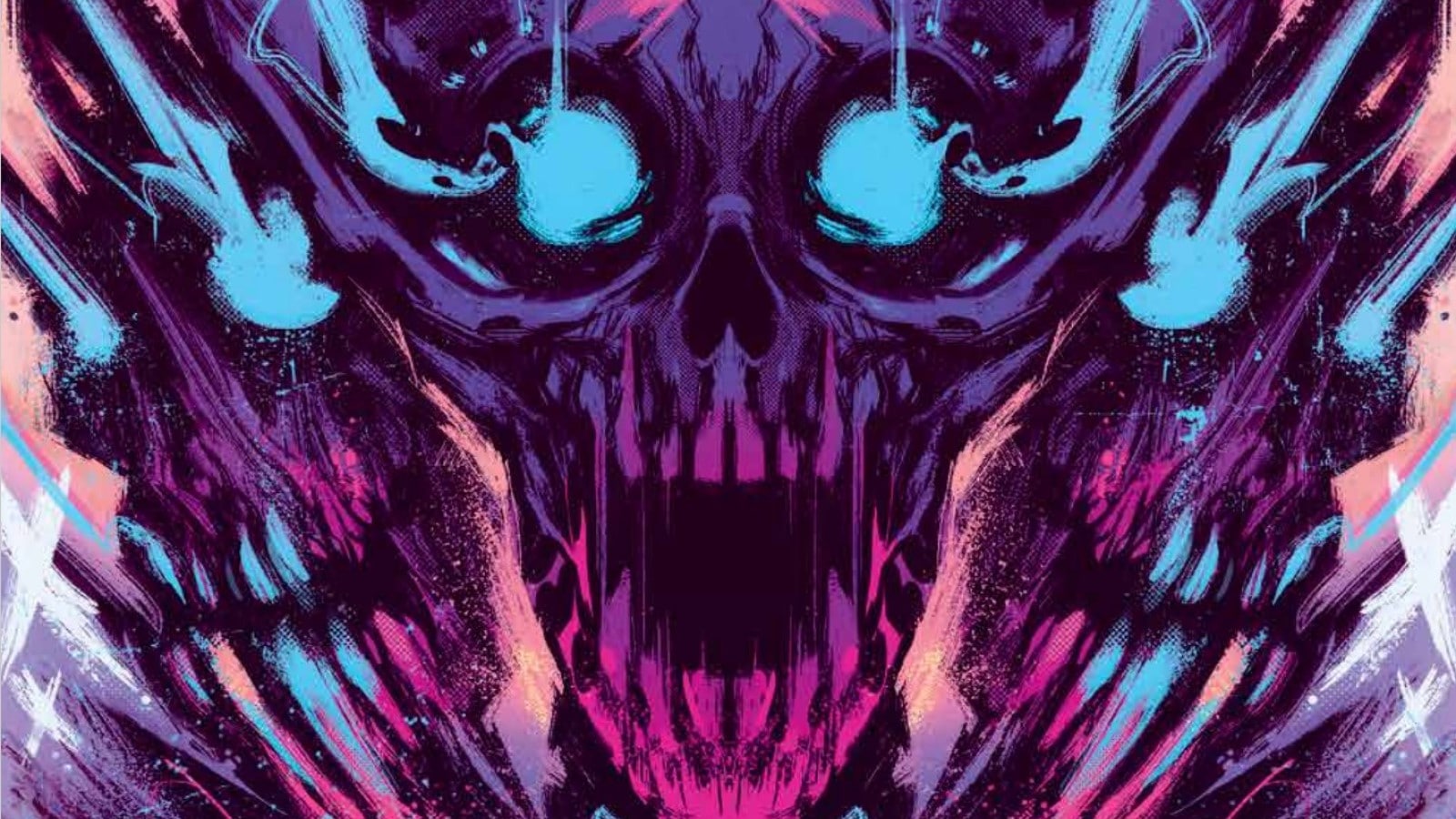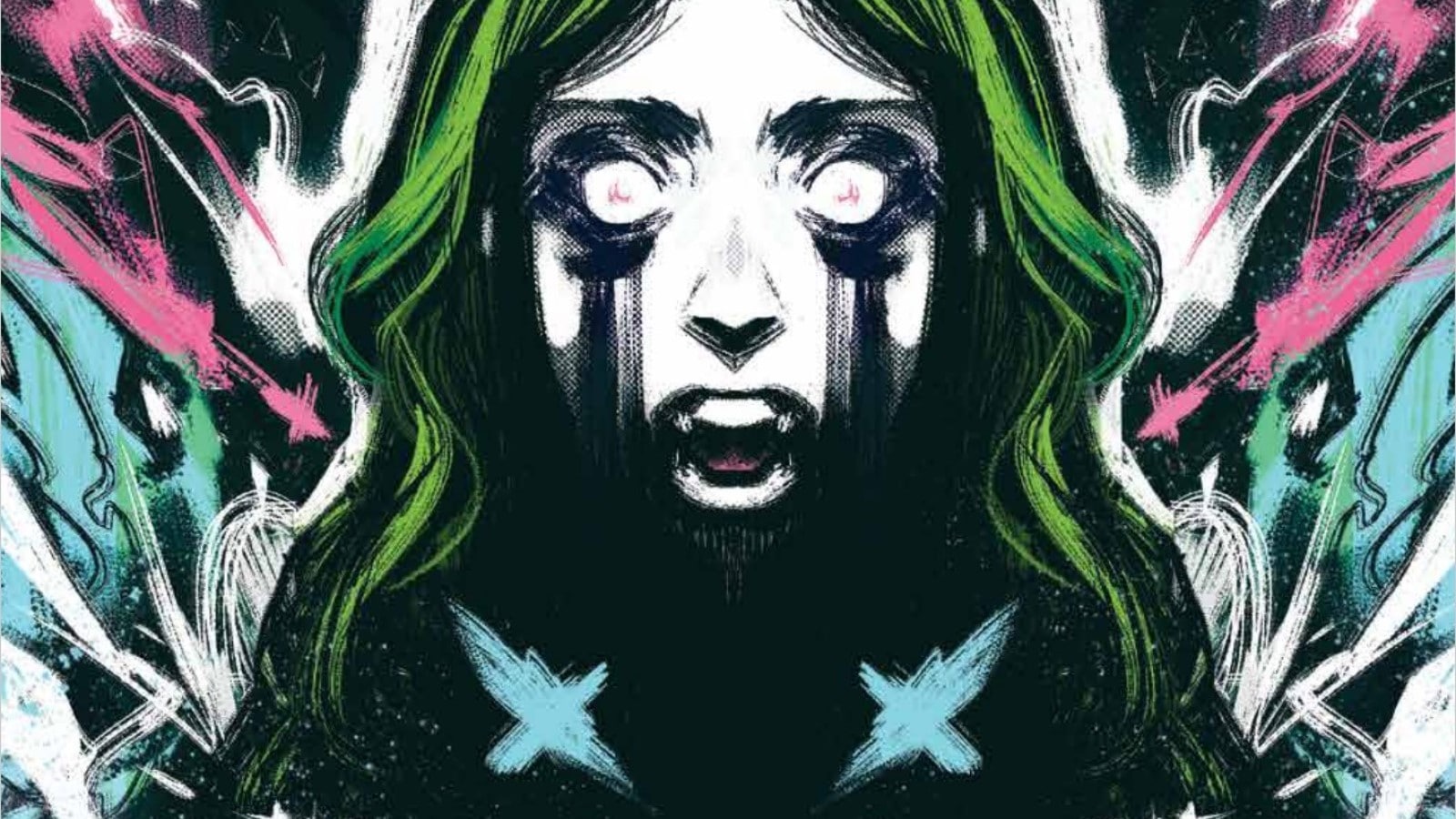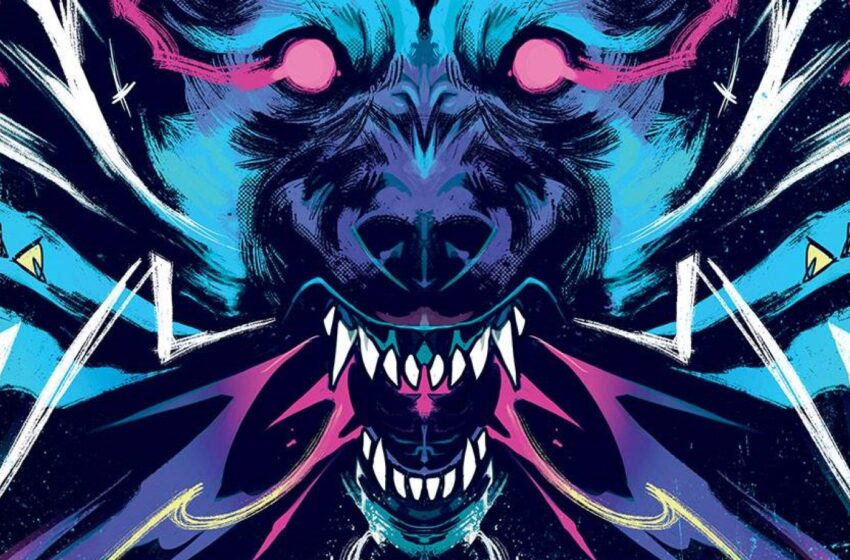The Old James House turns on Ami. If she can’t conquer her own demons, how can she expect to conquer those that haunt its hallways? Perhaps demons aren’t for conquering. Perhaps we must fight alongside them. Also, a house fistfights a monster. Dan Watters writes, Caspar Wijngaard draws, Aditya Bidikar letters and Tom Muller designs the final issue of the first arc of Image’s Home Sick Pilots.
Dan Grote: In this corner, weighing in at 120,000 pounds, six angry ghosts and one teenage girl, it’s the Old James House. And in this corner, weighing in at 7 ounces plus whatever it can grab, it’s a haunted VHS cassette. Tonight, these two natural enemies will slug it out for ectoplasmic supremacy. Ladies and gentlemen, lllllet’s get ready to rumblllllllllllllle!
Oh, hey, Forrest, don’t mind me, I’m just testing a theory about Michael Buffer and lawsuits. You ready to talk about a comic book in which a haunted house fights a VHS tape?
Forrest Hollingsworth: Hey, don’t let me stop you! I’ve been in something of a wrestling zone myself. Actually, uh-oh, that’s a lot of words. Maybe we should talk about something else before those brain worms take full control.
Who’s haunting whom?

DG: So we’ve seen Ami run errands for the house. We’ve seen Ami get ghost powers. We’ve seen Ami fight with the house. We’ve seen another of the Pilots, Buzz, form a gestalt entity with one of the ghosts, the Old James horseshoe. But this is the first time we see what happens when Ami opts to work with all the ghosts, which it turns out was why the house could walk in that first issue, and again here.
It’s interesting how Ami’s relationship with the house and its inhabitants has evolved over time. It still doesn’t feel healthy, like, at all, but, for a brief moment, she at least looks like she has some control. That even bears out on the cover to the issue, which features her smiling, as opposed to the cover to the first issue, where a pre-ghostified Ami looks miserable.
Despite all the gaslighting and the depression Ami’s gone through in these five issues, are we supposed to believe Ami’s found love in a haunted place, Forrest?
FH: I don’t know that I would say it’s love, but I do think this is the first look we’ve gotten at the relationship between Ami and the house being more … reciprocal (for both better and worse if we want to get into interdependency and maybe even more directly folie a deux). Previously, Ami seemed like a relatively powerless avatar for the house — her sympathy for its pain was taken advantage of, and to use the parlance of the mecha genre, it felt like the house was piloting her more than she was it.
Caught between reconciling that pain, the house’s shifting motivations (and structure, as we see in the labyrinthine opening sequence), and her own implied trauma, she’s been more or less floating through things in a way that’s very emulative of my own experiences with depression — it takes you out of things, numbs you. But there’s a much more deliberate, conscious choice from Ami here. In a moment of real, immediate crisis, she recognizes the home’s pain but also expresses her own — her renewed agency is taken literally in the piloting of the house mecha (mouse? hecha?). As much as they need her, she needs them. They’re developing a language, an understanding, an interdependency that makes sense to them, but as we’ll see later further distances them from the rest of the cast (as seen with Rip and Meg later). Watters’ refusal to make it one-sided, to make it messy and weird and cathartic and terrifying, is really satisfying, I think.
VHS or House?

DG: OK, so let’s get down to the reason for the season: a big fight between a walking haunted house and its natural enemy, the videocassette. I envision a big hole in the script where dialogue and exposition should be, and just a note from Watters to Wijngaard: “Go nuts.” Both the house and the VHS monster have leveled up from their previous appearances, and what we get is an acid-soaked kaiju battle cooler than anything you’ll find currently streaming on HBO Max. Forrest, what did you think of the climactic battle and the business surrounding it?
FH: I found myself wishing we got a little more of a motivation for the ghost busters. They’re clearly well funded, connected, in the know, but beyond that I’m at a loss for what it is exactly that they want. Do they want to tear the house down? Imprison it? I understand Rip and Meg’s motivations (and the immediate sadness of them; trauma begets trauma), but a little more narrative straightforwardness would’ve helped map the stakes of the kaiju-esque battle that’s central to the issue, which I do think was exceptionally well done visually — I loved that single panel where the house is operating in a kind of infrared mode, further focusing in on the kind of cross-genre pollination the book is good at.
DG: The final images of the fight, with the amusement pier wrecked and in the water, reminded me heavily of those photos after Superstorm Sandy of the roller coaster in the ocean off Seaside Heights. As a Jersey boy, that was a haunting image of destruction.
FH: I live in the desert and could be compelled to start crying about the ocean at literally any time.
End of an arc

DG: We end the first arc with Meg solidifying her position as Ami’s antagonist, getting her own ghost mech to pilot, which she has appropriately dubbed the Nuclear Bastard, in honor of her fallen bandmates. She’s taken red as her color, after being drenched in it for most of the issue, right down to her signature cap. This, of course, sets up the conflict for the second arc, coming in June.
But before we look forward, let’s look back. Forrest, any new insights on these five issues now that we’ve read them all?
FH: The image of that red ectoplasm floating around Meg is really cool, subverting all of the blood she was covered in in a really striking way — literally wielding it as a weapon, Wijngaard is almost unparalleled in capitalizing on those opportunities. I think Home Sick Pilots is really coming into its own as a story about interdependence, internalized and externalized trauma and relationships both in their best and worst moments. At the end of this arc I still have a lot of questions, but they’re good ones to have, ones that imply a much deeper, more nuanced and worthwhile story to be told.
DG: The year is young, but I can confidently say, four months in, this is my favorite book I’ve read this year. It hits this sweet spot of being dark and haunting while still allowing its characters to have fun, all while bathed in Wijngaard’s cool electric palette.
FH: We championed Meg in the first issue, and now I feel like we might be the bad guys, Dan. We heel turned!
DG: Hey, you said it yourself, the book’s messy. Ami and Meg can both be the good guy in their own way, in which case, WE WIN!
Cool Miscellany, Bro
- Love the Street Punks, who by their nature appropriate 1980s British punk culture, calling Rip a poser. There is nothing more 1990s punk than posers calling other punks posers. What are teenagers if not a series of poses in search of a cohesive identity?
- Is there only one cop in this entire beachfront California town?!
- My one art quibble in this issue: Rip and the one Ghostbuster look too much alike, like they both play rhythm guitar in Pearl Jam. When they’re all in the van it gets confusing.
- Did the cassette tape ghost have to be so … curvy? (“This better not awaken anything in me.” —
Dean PeltonDan Grote) - METAL GEAR: GHOST.







